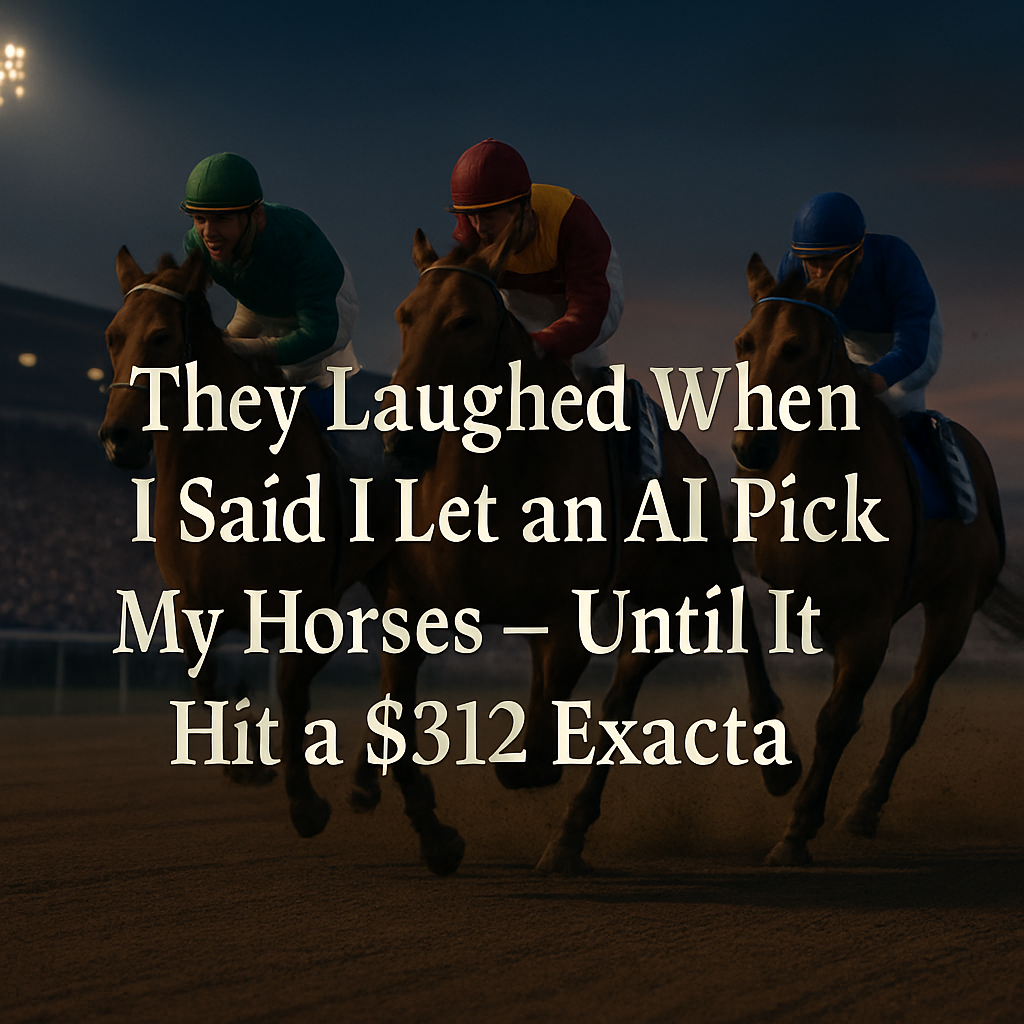After handicapping more than 200,000 races over 40 years, patterns emerge—but so do the limits of human cognition. Our instincts can be sharp. Our memory, trained. But no human can simultaneously quantify a dozen conflicting variables in real-time, across thousands of race conditions, surfaces, class levels, and pace dynamics. At some point, human edge plateaus. That’s when I built something that didn’t: a multilayered AI handicapping engine.
🧐 The Limits of Human Handicapping
Even seasoned horseplayers excel at:
Recognizing visible trip trouble
Noticing trainer intent via patterns
Interpreting pace bias and track nuance
But human handicapping consistently struggles with:
Weighting multiple interacting factors (e.g., early pace + class drop + second-off pattern + surface switch)
Quantifying trainer ROI or intent at conditional depth (e.g., 12% barn but 36% in 1st off claim + route-to-sprint setups)
Maintaining discipline over thousands of similar setups without fatigue or bias
This is where even the best stop progressing. So I converted my edge into a logic stack and gave it a computational brain.
🤖 The AI Framework: Betting Advantage Logic Stack
What I built isn’t a simple rules engine or regression model. It’s a layered decision architecture:
✅ 1. Pace Shape Modeling Engine
Parses positional velocity over last 3 starts
Measures energy distribution (E1-E2-Late) to classify runners into pace-type archetypes
Simulates field pressure and degradation rate by quarter-mile segment
Flags lone-speed with flow compliance or unsustainable need-the-lead setups
✅ 2. Form Cycle Efficiency Layer
Scores trajectory using a regression delta between Speed Figure + Projected Effort Efficiency
Incorporates trainer-specific cycle curves (e.g., hot 2nd start off layoff vs cold 3rd off on drop)
Adjusts for surface/switch tolerance based on historical ROIs
Penalizes races with artificially inflated figures (e.g., bias-aided or perfect-trip efforts)
✅ 3. False Favorite Detection Node
Flags public overlays using the following:
Negative trip upgrades
Bounce indicators (E2-late effort spikes w/ regression risk)
Unrepeatable pace setups
Trainer intent drop-offs (e.g., protected to claimer off win)
Scores a “decay rating” that measures the likelihood of figure regression under new conditions
✅ 4. Trainer Signal Isolation Layer
Calibrates for barn-specific placement patterns
Measures jockey/trainer win ROI by intent (e.g., high win % in MSW-to-MCL switch)
Flags subtle intent cues: protected placement, go-to jocks, entry strategy
Integrates firster signals based on worktab spacing, gate drills, and sire index
✅ 5. Exacta Box Probability Matrix
Computes pairwise finish likelihoods using weighted speed, pace compatibility, and class tolerance
Sorts top 4 by projected dual-finisher probability (not win-only projections)
Calibrates for field size volatility, trip chaos factors, and post position bias
Final output: exacta efficiency score, which measures box value against cost
📊 The Hybrid Model: Human Override, AI Backbone
This AI doesn’t replace my handicapping. It augments it.
I override when race-day scratches change flow
I adjust for off-tracks, late trainer quotes, and surface condition upgrades
But 90% of the time, the model sharpens my read and exposes subtleties even pros miss
When it flags a 5-1 contender with a positive pressure setup, bounce-resistant cycle, and low exposure? That’s money.
✨ Join the Only AI-Enhanced Handicapping Service Trained on 200,000 Races
This isn’t some fantasy algorithm. It’s trained on decades of real-world handicapping and battle-tested on every kind of card: Gulfstream sprints, Saratoga 2YO maidens, Oaklawn claimers, Kentucky Downs chaos.
📈 Join Betting Advantage Today and get the only expert-verified AI picks in the game. Exacta-focused, class-aware, and pace-optimized.
📅 $99 for a full year. One good hit pays for it.








